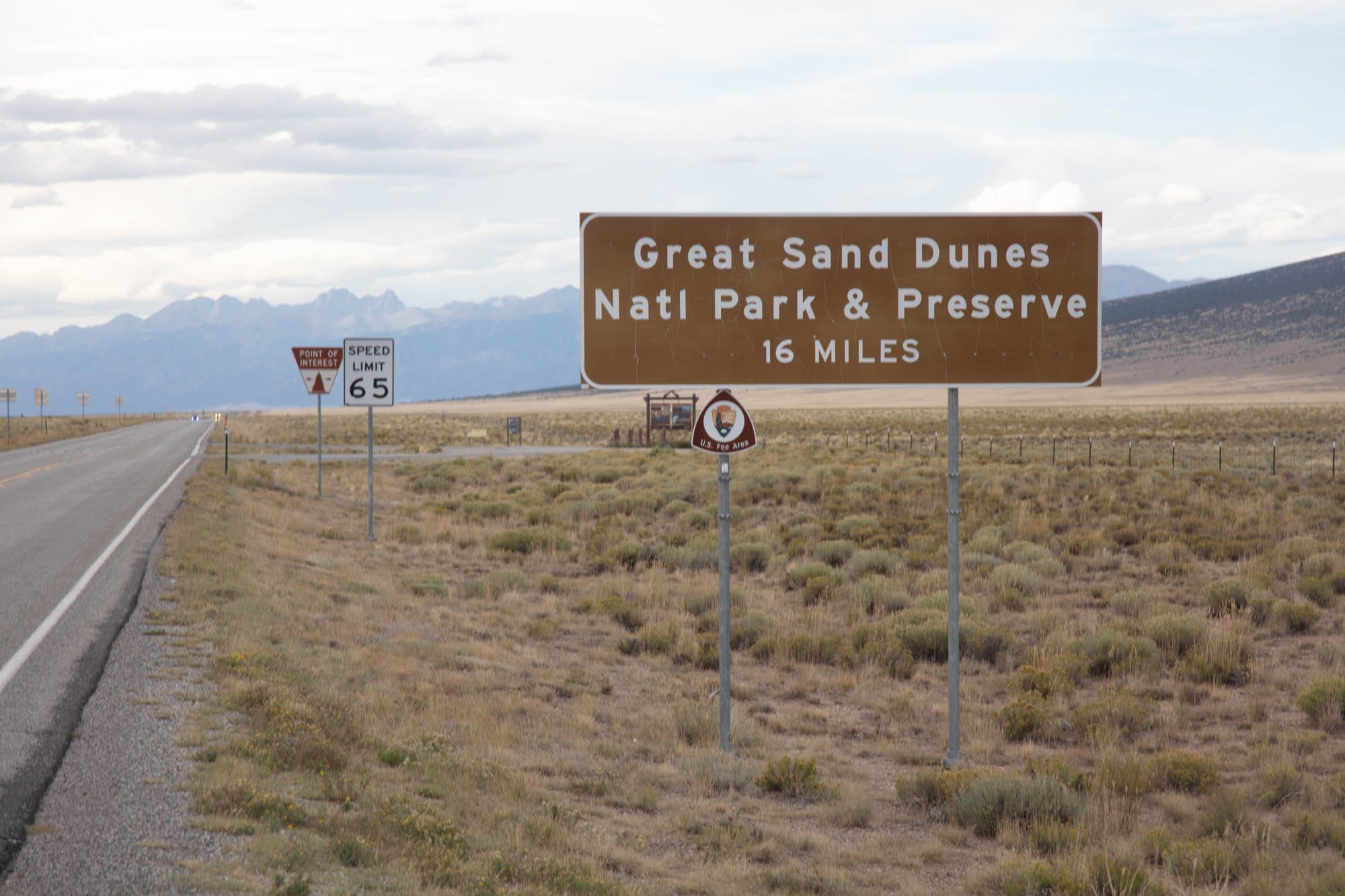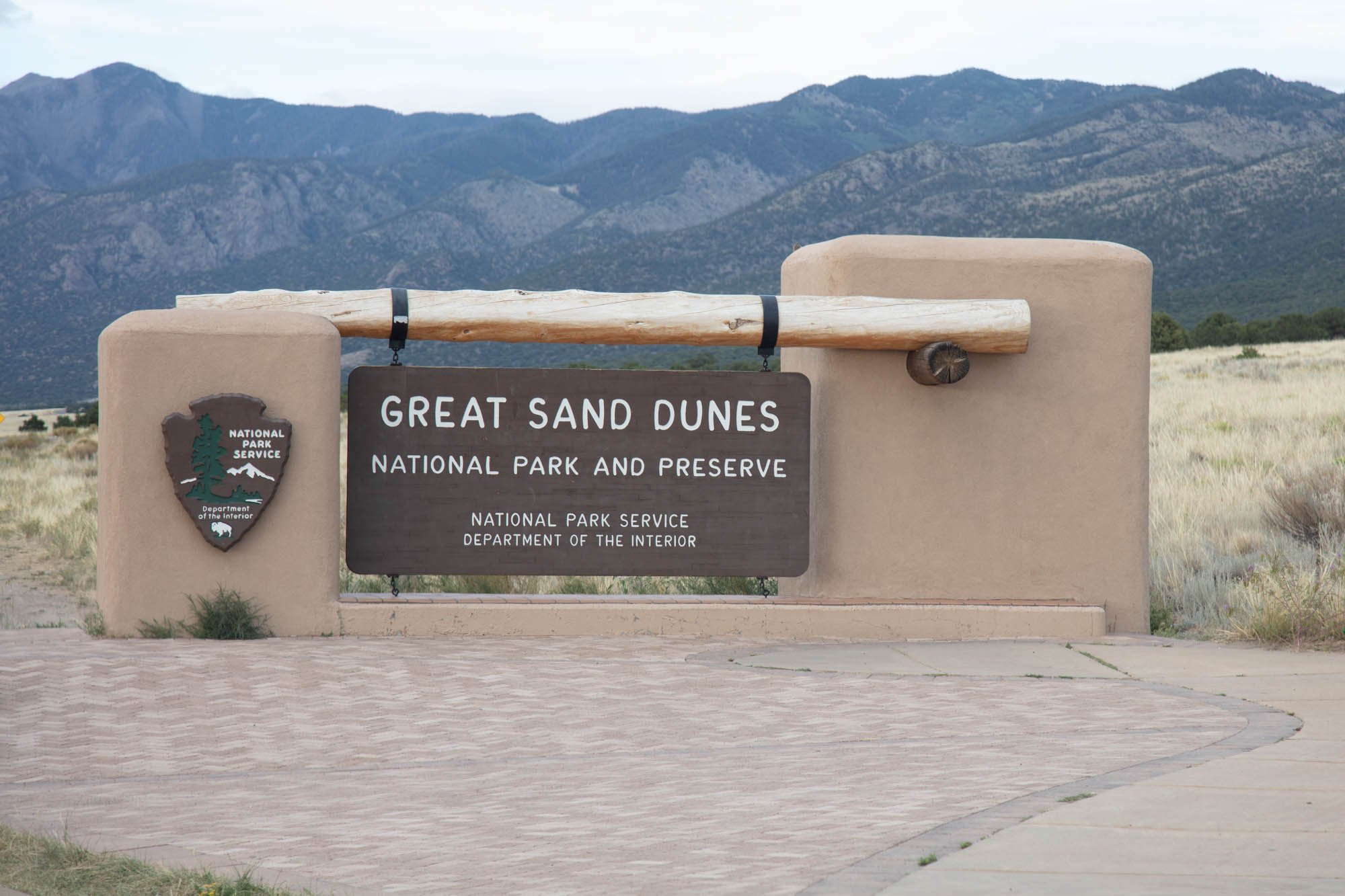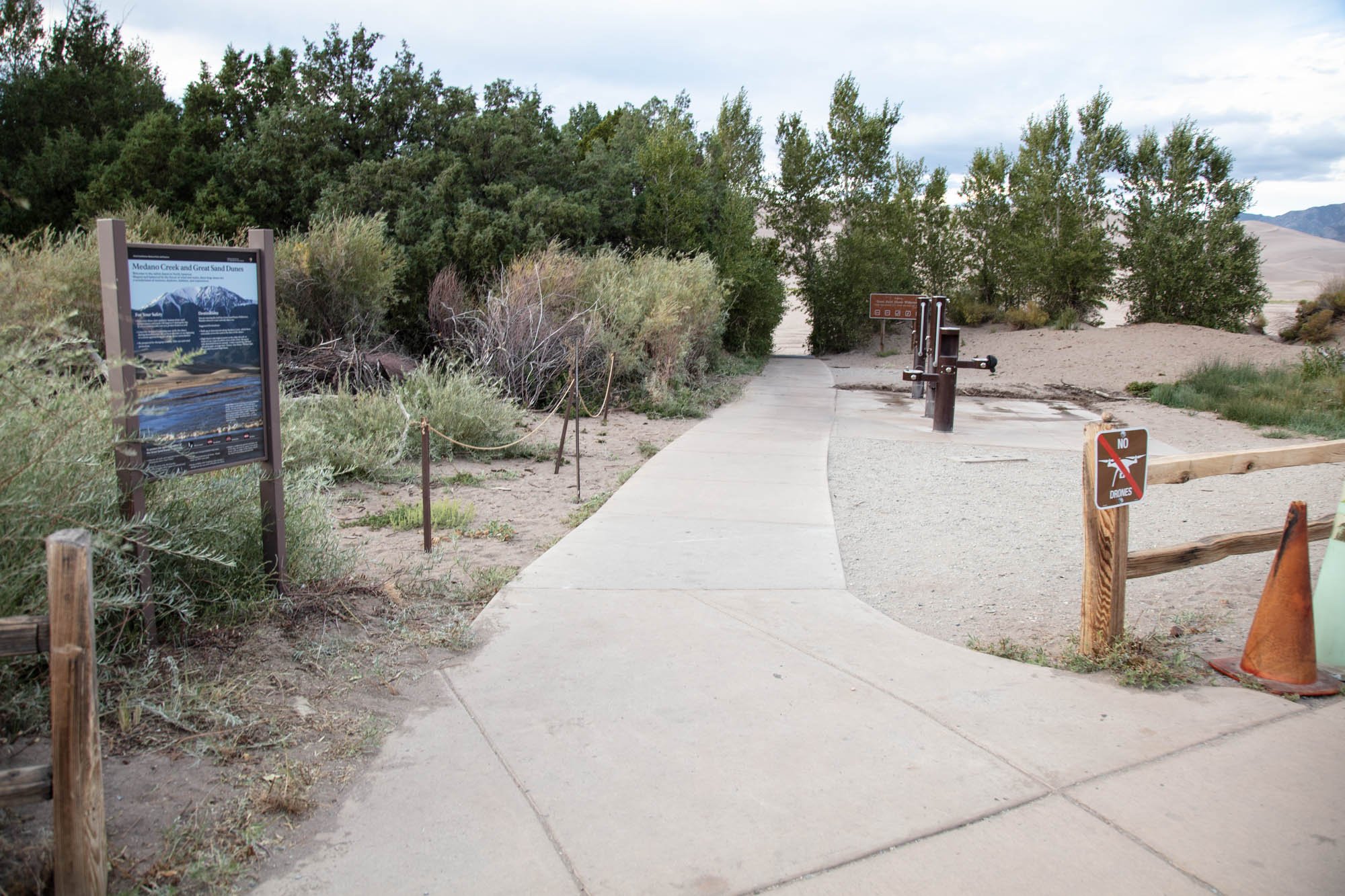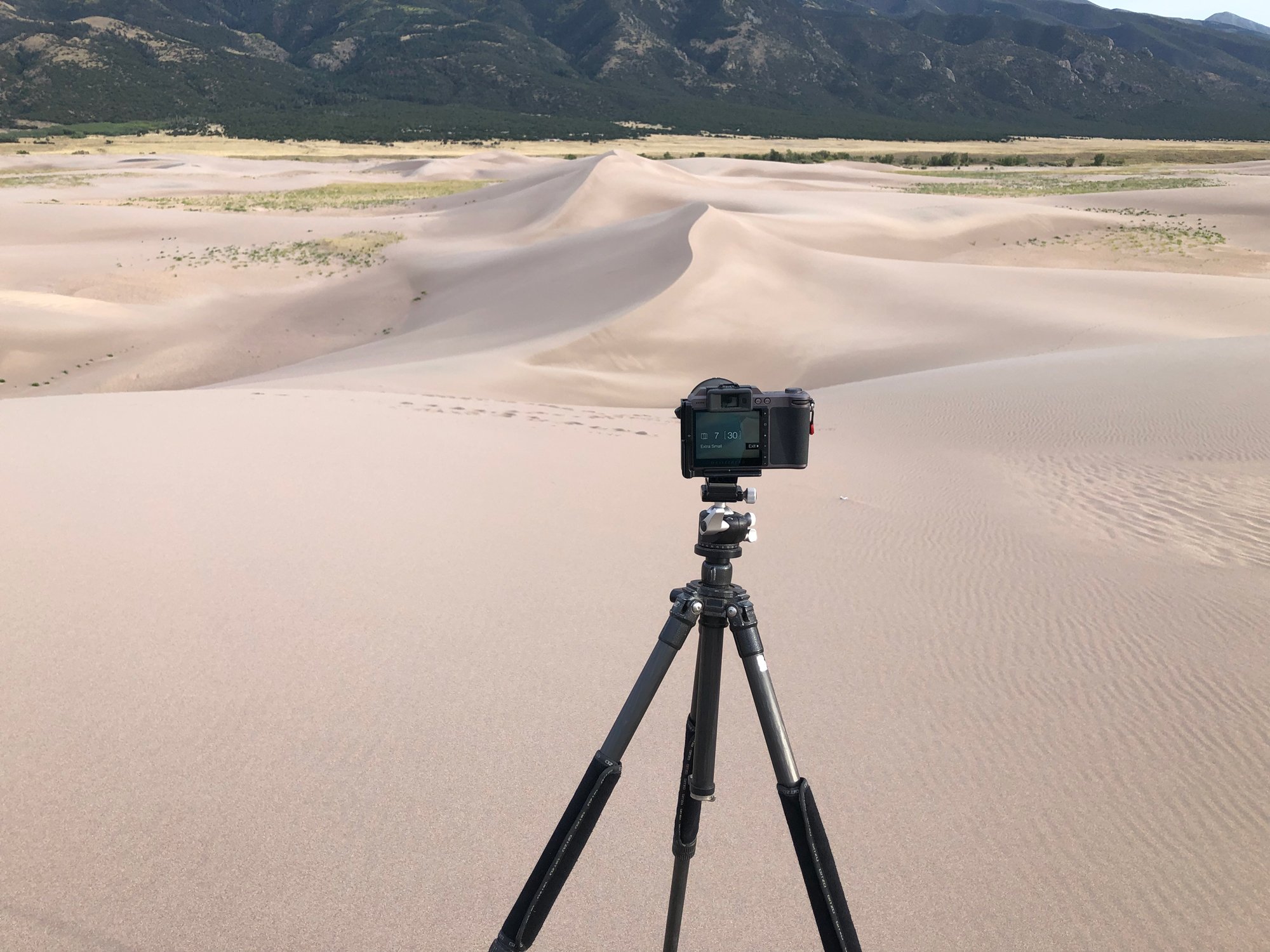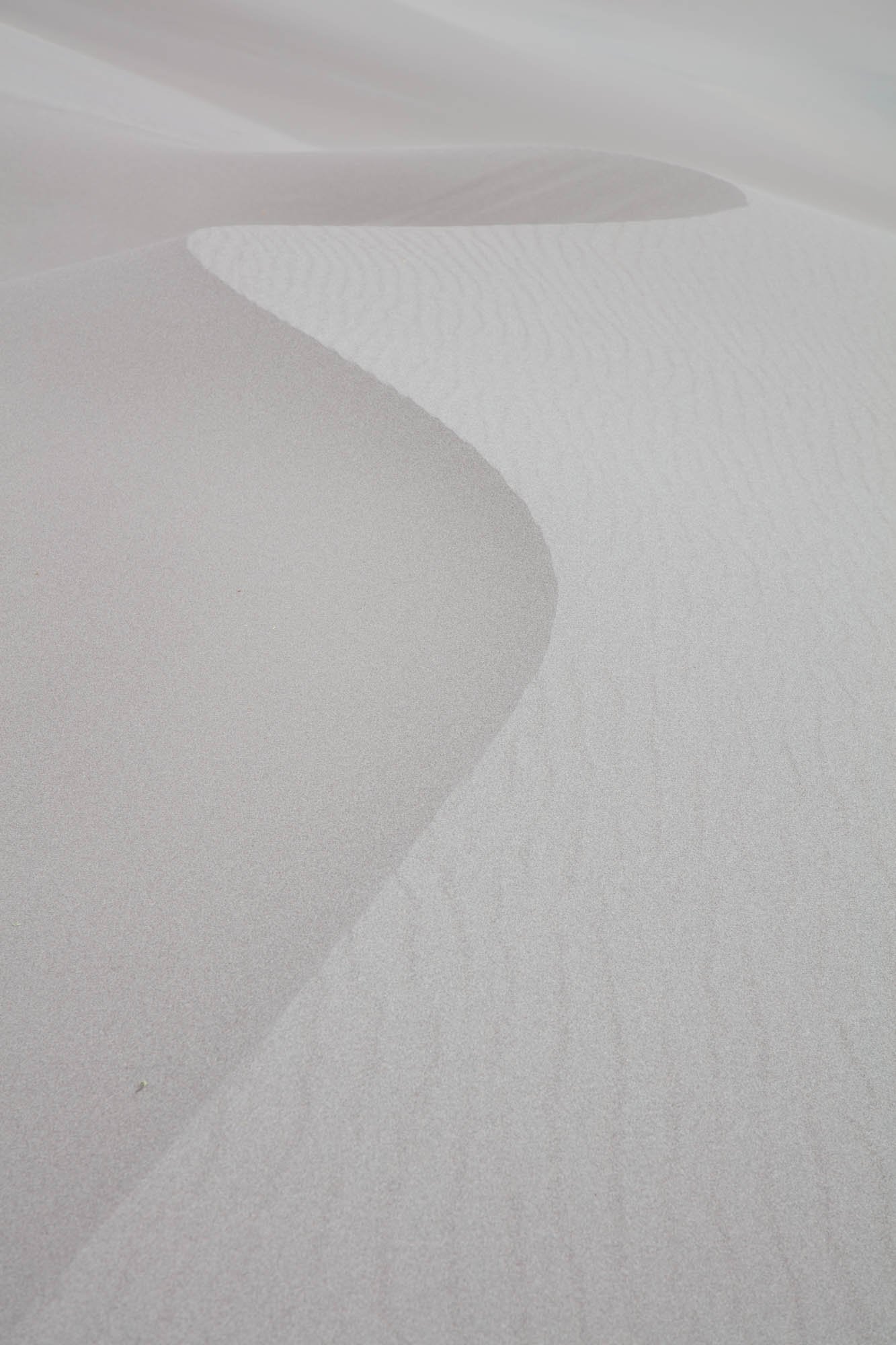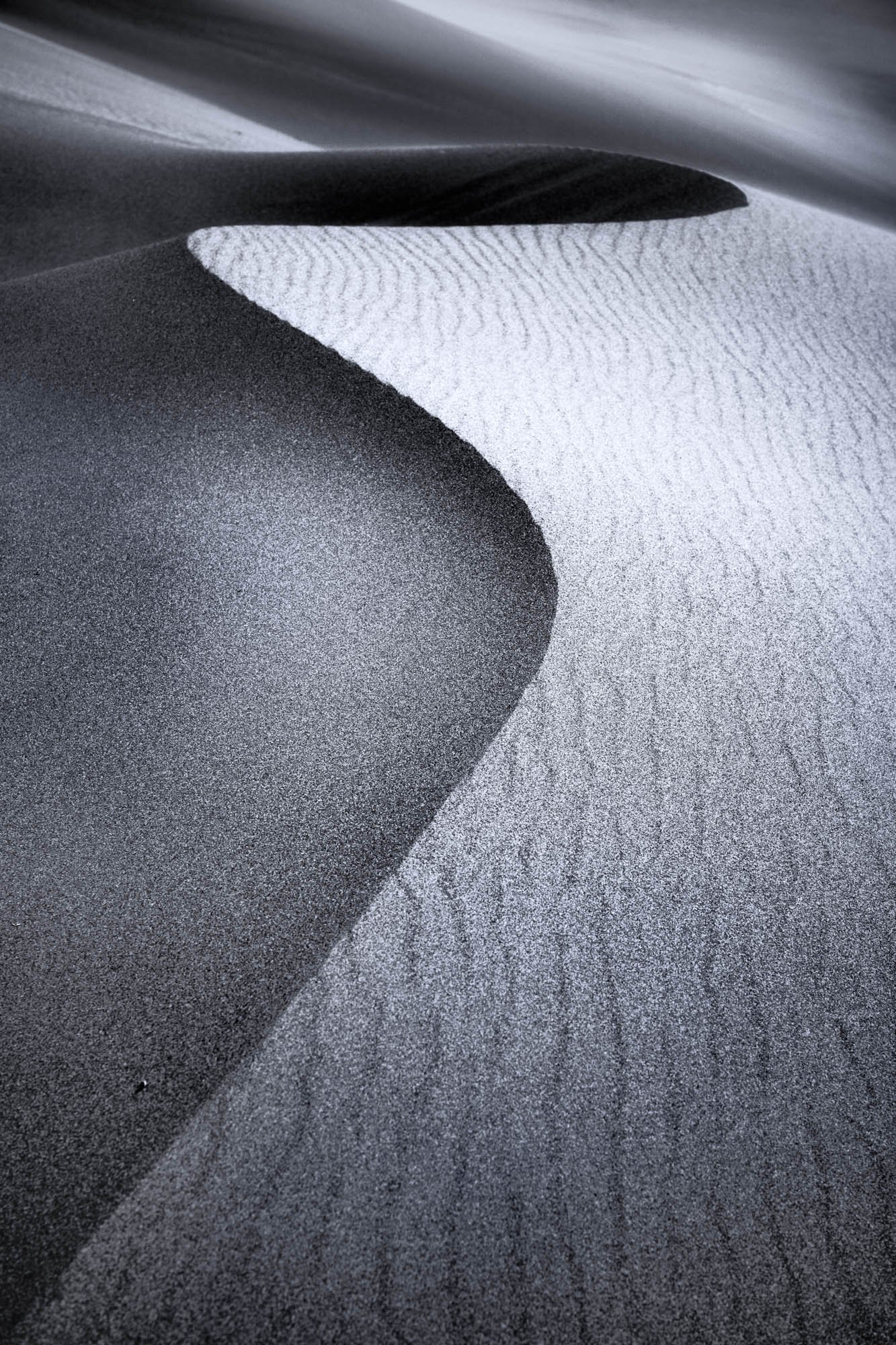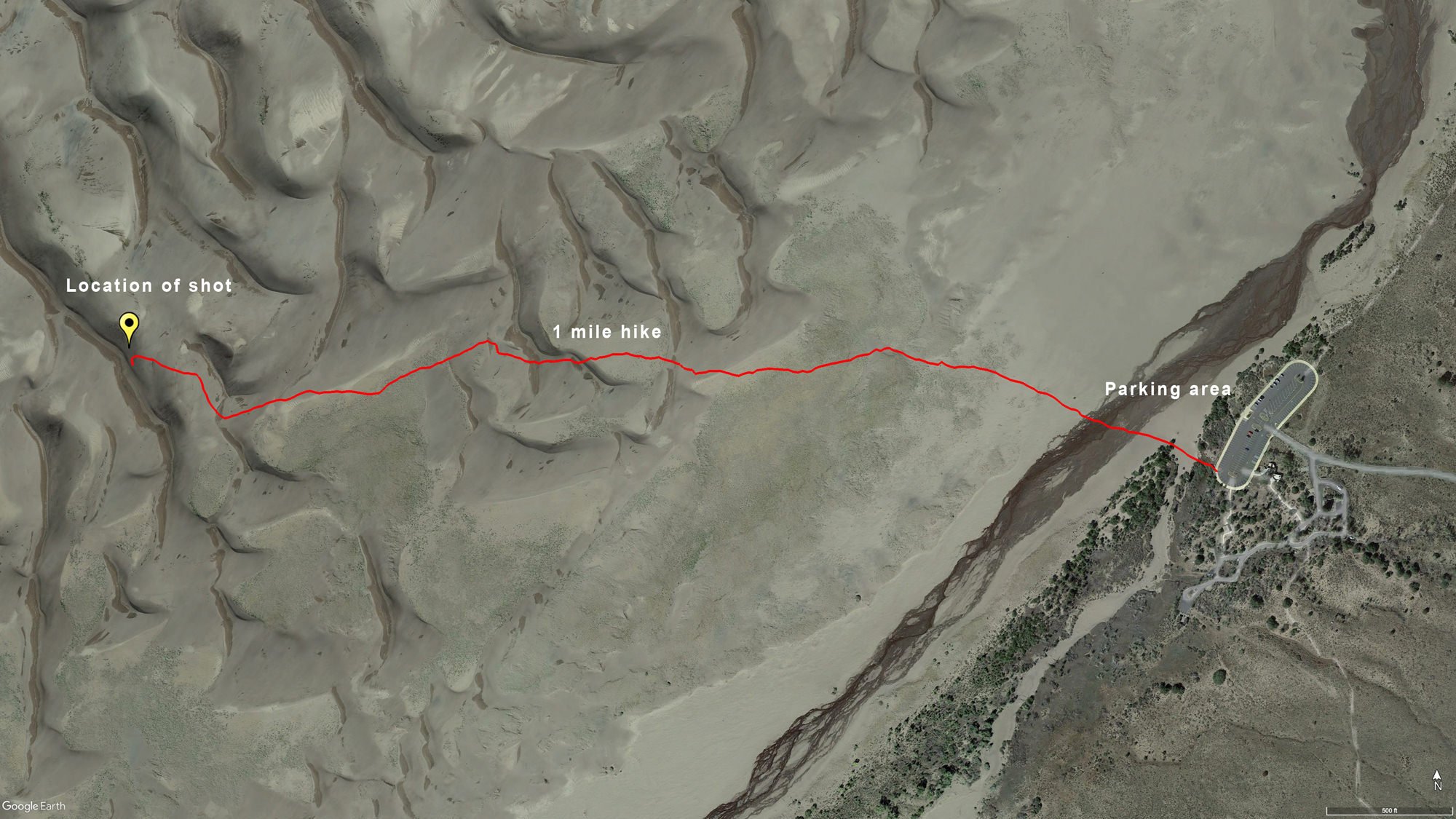GSDNP Sunset
Sunset Dune
Great Sand Dunes NP, CO
The Great Sand Dunes National Park is North America's largest and tallest sand dunes. The tallest dune stands over 700 ft., and the dunes are a massive 30 square miles!
The dunes provide endless compositions with every shape imaginable. However, when photographing sand dunes, I look for abstracts or moods created by curves and shadows.
After a few hours of hiking and scouting for compositions (trying to keep up with my good friend Jeff Davis - who was heading for the top of the dunes), I stumbled on this composition that caught my eye. Oddly enough, this shot was facing down the dunes when I was mostly looking up. Sometimes, the best shots are found in the middle of the obvious.
Images and location summary by Tim Wier
Trail Difficulty - MODERATE to CHALLENGING
I rate the difficulty of this trail as a 2 on a scale of 1-5 (with 5 being the most difficult). The hike to this location is roughly a mile from the parking area. However, you will be hiking in sand (sometimes deep and uphill), so it can be challenging.
GPS Coordinates & Elevation
8,055 Ft. Elevation
Downloads
View In Google earth
Directions
CLICK HERE to get driving directions to parking area to access the Great Sand Dunes National Park.
From Denver - travel on US-285 for 90 miles until you get to Buena Vista, CO. Turn left (south) and continue on US-285/CO-17 for 86.6 miles until you a turnoff for the Great Sand Dunes National Park. Travel on Lane 6 N for 16.1 miles until you reach CO-150 N. Take a left (north) on CO-150 for 5.9 miles until you get to the visitors center. From the visitors center, continue a 1 mile until you see the turnoff for the Great Sand Dunes Parking area.
From Alamosa - travel west on US-160 for 14 miles and then turn left (north) on CO-150 N for approximately 19 miles until you enter the Park. You can access the dunes in several locations, including the dunes parking or at the Pinon Flats campgrounds.
Location of this shot - from the parking area, hike west up and over several dunes to get to the GPS coordinates 37°44'25.2 "N 105°31'58.7 "W or download the KMZ file to be used with a GPS tracking app. Remember that the sand dunes shift, and this composition's shape, size, and location can change over time.
IMPORTANT: The shot above was facing DOWNHILL from a higher dune. When looking for compositions in dunes - look every which way.
Photography Tips
My style for photographing dunes is about looking for abstracts or moods created by curves and shadows. And sometimes, these abstracts are found in the middle of the obvious, so always look around (up and down the dunes). For abstract and moods, I much prefer a sky with NO CLOUDS.
I found this location a few years back, but the lighting was terrible (completely overcast with no contrast) - see the image below. Because the lighting was so flat, all I could do was create contrast and make it into a black and white. I returned in 2021 to the same spot, looking for a more contrasty opportunity. Over the years, the dune had shifted, but a similar "S" curve still was present.
For the main image above, I arrived at the location about 2 hours before sunset and waited for the right shadows and contract. For me, this was about an hour before sunset. As mentioned above, this shot was taken pointing DOWNHILL from a higher dune.
Special Note: The Dunes are constantly shifting shapes as they are formed and moved by wind, so what is present one year may be completely different the next. It is important to stop and look at what you are seeing to identify unique photos.
EXIF Data
Focal Length – 180 mm equivalent lens
Exposure – 1/200 sec @ f 8.0
ISO – 100
Date – Sept 24th
Time – 5:50 pm
Best Time of Day to Shoot
You can shoot the dunes at the GSDNP any time of day. However, to capture an image with deep shadows, you must shoot at or near sunrise or sunset.
The location of this shot is on the western side of the parking area and receives the best side light at the end of the day (toward sunset). The image above was taken at 5:50 pm on a day when the stated sunset was 6:54 pm.
Best Time of Year
You can shoot the dunes at GSDNP any time of year.
The above image was taken on September 24th.
Lens(es) Needed
Depending on your type of dune composition, you should bring a standard lens or a medium telephoto. I prefer more compression/abstract images when shooting the dunes, so I usually carry a medium telephoto lens. The image above was taken with a 180 mm equivalent lens.
Birds-Eye View
Permits
A National Park Pass is required to access the dunes. A 7-day pass can be purchased at the entrance to the Park for $25.
Direction of the Shot
The direction of your shot is mainly south, around 180°.
Equipment Needed
Large sand dunes are like few other places you will photograph.
Besides photography equipment, bring a hat, sunglasses, sunscreen, and plenty of water. If you are hiking on the dunes late afternoon or evening, bring a flashlight/headlamp, compass, and/or GPS to help you navigate back to the car as darkness sets in.
In addition to protecting yourself, it is important to protect your camera gear. Sand can and will get inside your gear if you are not careful, so bring your camera bag and cover your gear during wind gusts.
The Great Sand Dunes has the potential for very high winds. On windy days, you should expect to get pelted by fine sand particles while climbing and shooting. Wearing long sleeves and pants with covered-toed shoes (or going barefoot) will make your experience much more enjoyable.
Number of Other Photographers to Expect
he Great Sand Dunes NP is a popular place for tourists and a few photographers. I hike a mile or so away from the main parking area to avoid people or footprints. The location where this shot was taken is off the beaten path, and you will most likely see few, if any, other folks at this spot.
Weather
The weather in Colorado is normally mild in the summer and cold (lows in the 20s) in the spring and fall. Great Sand Dunes National Park and Preserve are open 24 hours a day, 7 days a week, year-round.
Cell Service
I have Verizon, and there is cell service in most of the Park. There are a few places where service is limited to no cell service.
Lodging & Camping
The closest town to the Great Sand Dunes National Park is Alamosa, CO - about 30 miles southwest. It is a moderately sized community with several hotels.
There is a VERY NICE campground just down the road from the visitors center called Piñon Flats Campground. It has 85+ campsites and costs $20 per night for singles. Reservations can be made from May 1 - September 20. Other times of year are first come, first served.
Another nice option that is very close to the National Park is the Great Sand Dunes Lodge. The lodge includes rooms, cabins, primitive camping sites, and a decent place to grab some grub.
Nearby camping and lodging
Camping - click on the campground below for directions
Piñon Flats Campground (3 miles away)
Zapata Falls Campground (12 miles)
Reserve through the Recreation One-Stop system online or contact them by phone at 877 444-6777.
Lodging - click on the lodging below for a TripAdvisor review
Great Sand Dunes Lodge
7900 State Highway 150, Mosca, CO
(719) 378-2900
Comfort Inn & Suite
6301 W US Highway 160, Alamosa
(719) 587-9000
Fairfield Inn & Suites
721 Mariposa St, Alamosa, CO
844-631-0595
Area Guides and Workshops
A GREAT resource for photographing The Great Sand Dunes (and all things sand dunes) is "How to Photograph Sand Dunes of the American Southwest," written by Rob Strain. This 188-page e-book provides great information on planning your trip to the dunes, composition, safety, checklist for equipment, post-processing, and maps to The Great Sand Dunes and 11 other sand dunes in the US.
A must-have when shooting dunes ...



